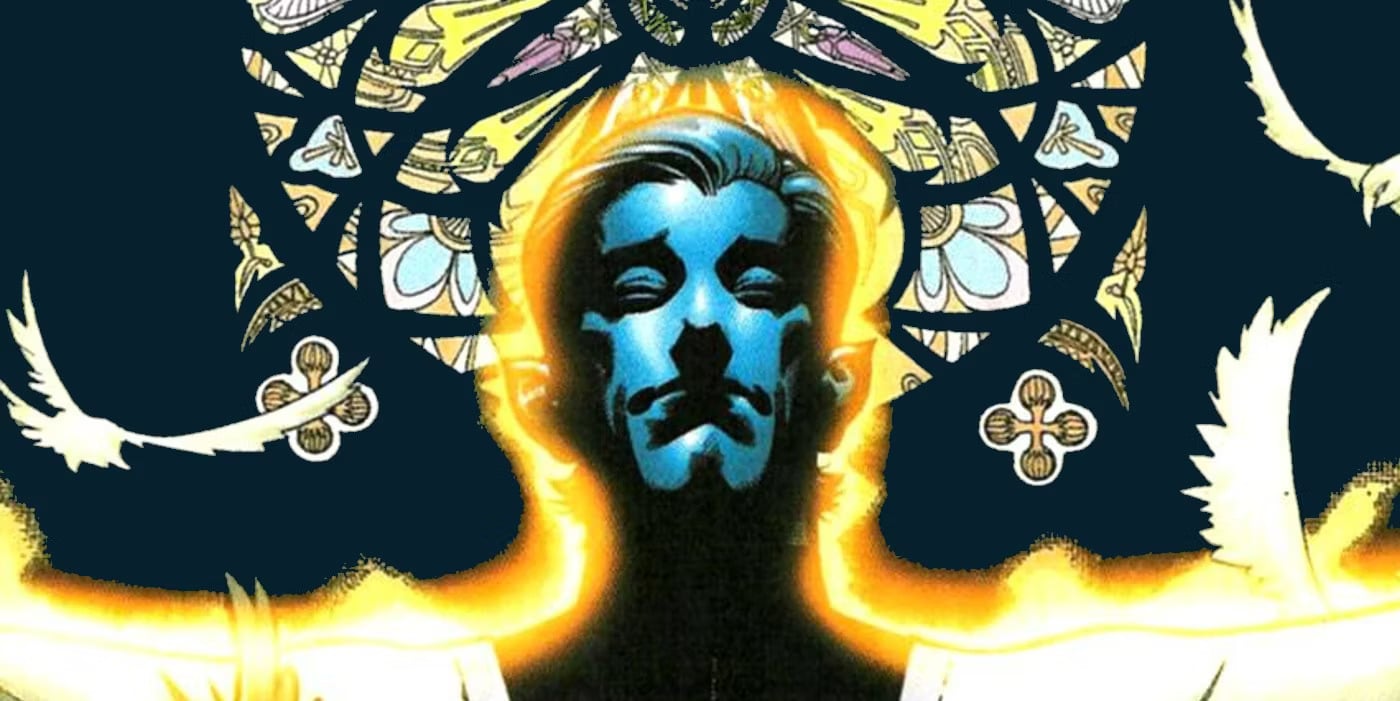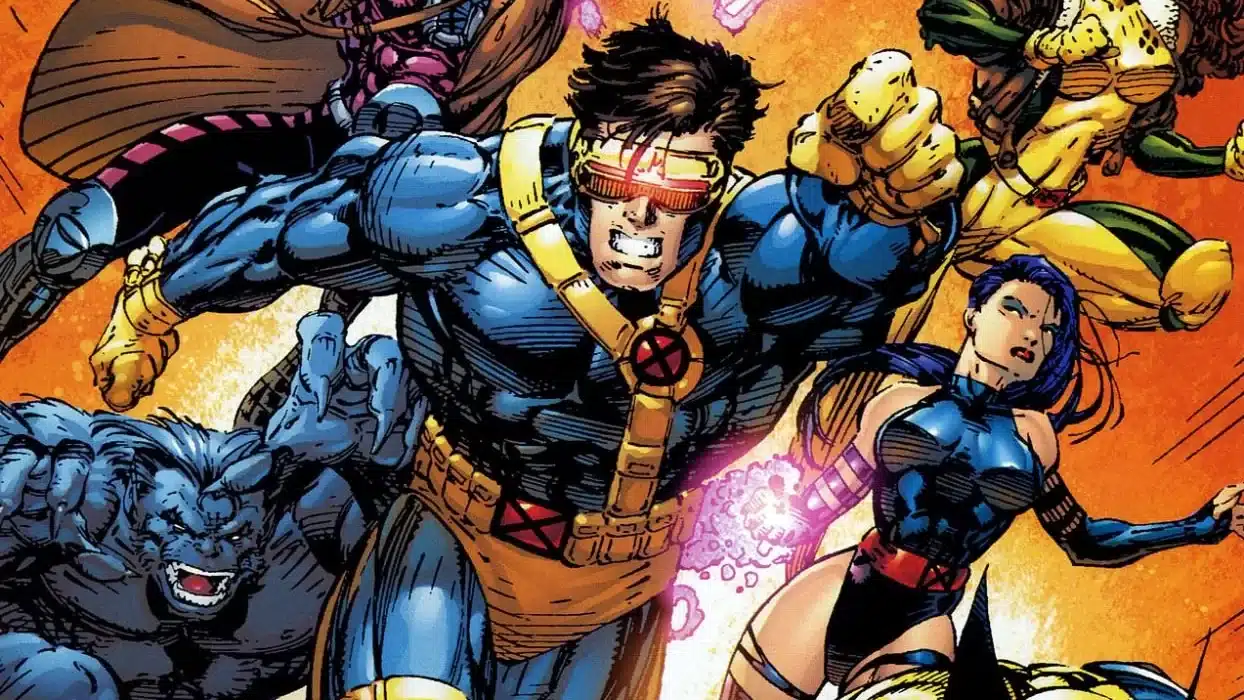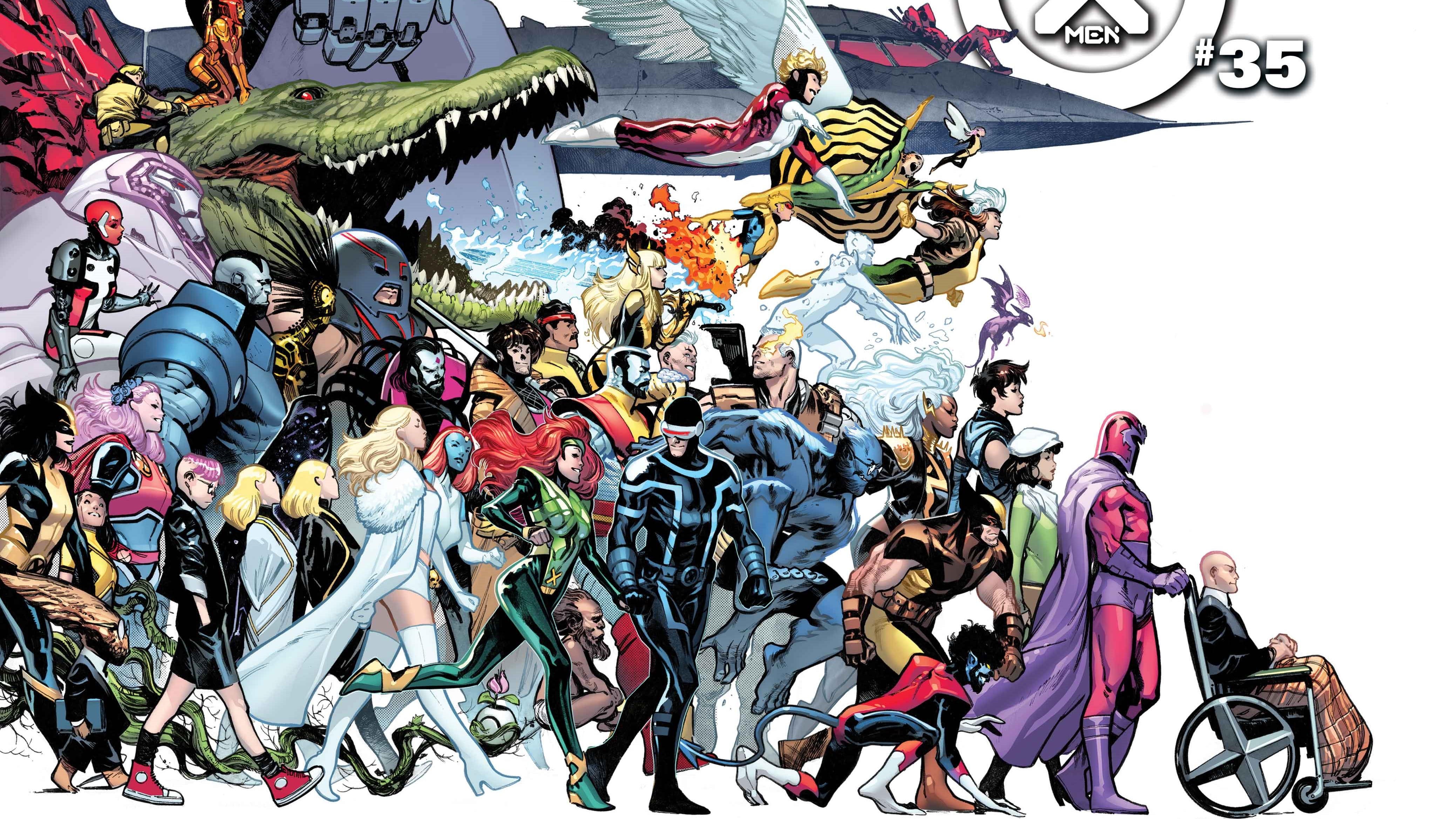Recent news that Tom Brevoort, Marvel Comics’ longest serving editor, would be taking over stewardship of the X-Men sparked discussion among X-fandom regarding the relative merits of two different approaches to the characters: one that strives to push the X-Men forward, making them more than typical superheroes, and another that strives to present a more “back to basics” depiction of the X-Men.
A good example of the former is something like Chris Claremont’s Outback-era team, or the last few years of stories built around the mutant nation of Krakoa. The more traditional status quo, meanwhile, is one in which the X-Men are a small band of superheroes fighting to protect a world that fears and hates them, usually while operating out of a posh mansion and under the guidance of Professor X.
It’s important to note that, as of this writing, whatever Brevoort has planned for the franchise — whether it will be the “back to basics” approach implied by his relative longevity at Marvel and the presumed desire of its corporate overlords to present a more traditional version of the characters in comic books ahead of their likely debut in the Marvel Cinematic Universe — remains unknown. But the discussion regarding Brevoort’s new job got me thinking.
From House of X and “Age of X-Man” all the way back to the days of Avengers vs. X-Men and Utopia, it’s been quite a few years since we’ve seen a full-throated presentation of the “classic” X-Men status quo. Therefore, are we at the point where the amount of time the X-Men have been arrayed in their “traditional” status quo is less than the amount of time in which they’re doing something else? Or does that classic setup remain the dominant one, and therefore the one the franchise is most likely to return to if “back to basics” is the edict?
With that in mind, I decided to take a look at the narrative history of the X-Men (something I’m always half-doing in my mind anyway) and crunch the numbers to see which presentation reigns supreme: the “classic X-Men” approach or, to steal a phrase, some version of an “all-new, all-different” X-Men status quo.
For the purposes of this exercise, I am defining “classic” as “the X-Men operating out of the X-Mansion, with Professor X in some kind of mentor role” (whether the X-Men are actively depicted as being students is irrelevant). This is the status quo picked up by outside media, everything from animated series to the feature films (more on this later), which is usually a good indicator of a “baseline” status quo. “All-New, All-Different” X-Men stories, on the other hand, are anything that’s not that — no mansion, no Xavier. As we’ll see, there are some gray areas within those stark divisions, but we’ll tackle them as they arise.
Without further ado, here are some numbers!
X-Men #1-42 (1963-67, five years)

The first five years of the X-Men’s existence provide the template for the classic status quo. The original X-Men — Cyclops, Beast, Iceman, Angel and Marvel Girl — are students of Charles Xavier (though only for roughly the first seven issues of the series) fighting super-villains out of Xavier’s Westchester mansion. There are a few brief Xavier absences in this period — notable from issues #8-10, in which he’s off hunting Lucifer, leaving Cyclops in charge — but there was never really any expectation that he wouldn’t be back.
Verdict: Classic X-Men
X-Men #43-64 (1968-69, two years)
Professor Xavier’s death in X-Men #42 marks the first prolonged “Xavier-less” period for the series, as writer Roy Thomas (as well as Gary Friedrich and Arnold Drake) attempts to shake things up (and boost sales) by breaking up the X-Men and pushing them out on their own, before bringing them back together in time for artist Neal Adams’ groundbreaking work on the series.
Verdict: All-New, All-Different X-Men
X-Men #65-93 (1970-74, five years)
Professor X is revealed to be alive and well in X-Men #65, just in time for the series to be canceled with issue #66. A few months later, it is revived as a reprint book, while the X-Men (sans Beast, who leaves the team for a horror-inspired feature in Amazing Adventures where he gets “blue” and furry for the first time) take turns popping up as guest stars in everything from Marvel Team-Up to Shanna the She-Devil to Captain America. While there is some experimentation in this era — including a few appearances in which the X-Men appear only in plainclothes, an approach Roy Thomas briefly tried for the series-less heroes in their guest appearances — and it’s hard to consider an extended run as guest stars in other books as “classic,” the X-Men of this era are still technically operating out of the X-Mansion, led by Professor X — and anyone reading a reprinted story in the series titled “X-Men” would see the same thing.
Verdict: Classic X-Men, on a technicality

X-Men #94-#110 (1975-77, three years)
Revived in Giant-Size X-Men #1 with a new, more international cast of characters including Wolverine, Nightcrawler, Storm and Colossus, the “All-New, All-Different” era of X-Men kicks off in issue #94 as the series begins printing new stories again, penned by a then up-and-coming writer named Chris Claremont. Though these stories are touted on the covers as starring the “all-new, all-different X-Men,” and though the X-Men are away from the mansion for most of issues #98-108, this still counts for our purposes as an example of the traditional status quo for the series.
Verdict: Classic X-Men
X-Men #111-#128 (1978-79, two years)
The X-Men appear at the X-Mansion in issue #110. After that, they won’t step foot inside its doors for months, as the “World Tour” mega-arc that sees the X-Men tossed from a Texas carnival to an Antarctic volcano base to the Savage Land to Japan to Canada kicks off in issue #111. Along the way, Xavier believes the X-Men to have been killed in battle, prompting him to leave Earth (for the first but not the last time) with his alien bird girlfriend. He will not return to Earth and the X-Men until issue #129.
Verdict: All-New, All-Different

X-Men #129-141, Uncanny X-Men 142-#154 (1980-81, two years)
While the X-Men of “The Dark Phoenix Saga” and “Days of Future Past” are hardly students, they do spend this chunk of issues operating out of the X-Mansion, with Professor X at the helm.
Verdict: Classic X-Men
Uncanny X-Men #155-167 (1982, one year)
When alien Sidrian Hunters destroy the X-Mansion in issue #154, their attack kicks off an extended rebuild the mansion/live on Magneto’s HP Lovecraft island/lost in space sequence that doesn’t end until the X-Men return to Earth from the “Brood Saga” to find the mansion completely rebuilt and the New Mutants living in it.
Verdict: All-New, All-Different
Uncanny X-Men #168-200 (1983-85, three years)
One of the longest sustained runs (in number of issues) outside the Silver Age to feature the X-Men in the X-Mansion with Professor X hanging around (now mentoring both the X-Men and the actual-student New Mutants), the Paul Smith and John Romita Jr. runs on the title represent peak X-Men for a number of fans, a neoclassical three-year era.
Verdict: Classic X-Men
Uncanny X-Men #201-280 (1986-91, six years)

The pinnacle of post-Silver Age classicism is immediately followed by the longest period of “off-brand” X-Men stories. Professor X goes into space, again, in issue #200, leaving Magneto in charge, and won’t return to the series until #275 and to Earth until #278, when he leads the battle against the Shadow King on Muir Island. Meanwhile, the X-Men abandon the mansion in the wake of “The Mutant Massacre,” operating out of Muir Island and then San Francisco (not for the last time) before settling in Australia, kicking off the Outback era, followed by an extended run in which there’s no formal team of X-Men at all, and a very brief period in which a reformed Xavier-less team operates out of the destroyed mansion’s basement.
Verdict: All-New, All-Different
Uncanny X-Men #281-337, X-Men Vol. 2 #1-57 (1991-96, five years)

In a direct response to the long period of nontraditional X-Men storytelling driven by Chris Claremont’s desire to push the boundaries of the series, the ’91 relaunch that brings us a second X-Men title is a conscious “back to basics” effort, with Professor X returned from space and the X-Men (including the original five, back with the team for the first time since the launch of X-Factor in 1985) operating out of the X-Mansion (rebuilt again after Mister Sinister blew it up in “Inferno”).
Notably, this era coincides with the launch of X-Men: The Animated Series, which draws much of its setup and visual inspiration from this era of the series. Also of note, “The Age of Apocalypse” occurs during this time, and while it is obviously an atypical X-Men status quo (with Xavier dead and Magneto leading the X-Men against a dictatorial Apocalypse), it is designed from the start to be both atypical and finite — it works, in part, because of how different it is from the now-usual status quo, and therefore doesn’t count as its own period of “All-New, All-Different X-Men.
Verdict: Classic X-Men
Uncanny X-Men #338-359, X-Men Vol. 2 #58-79 (1997-98, two years)
After Xavier brings about the birth of Onslaught, he is taken into government custody, removing him from the series once more for a number of years. The X-Men remain in the X-Mansion, though “Operation: Zero Tolerance” strips it for parts.
Verdict: All-New, All-Different
Uncanny X-Men #360-#465, X-Men (Vol. 2) #80-113 and #157-177, New X-Men #114-156 (1999-2005, seven years)

The last hurrah of the classic status quo begins with “The Hunt for Xavier,” which brings Professor X back into the fold (as well as Nightcrawler, Colossus and Shadowcat, after their years in spinoff series Excalibur). From there, a number of creative directions spin up and down, from Alan Davis’ caretaker run to Chris Claremont’s first and second returns to the X-Men, to Grant Morrison’s boundary-pushing yet surprisingly nostalgic run (and, uh, the contemporaneous Chuck Austen run). During all of that, a semblance of the classic status quo remains in place, with Professor X back with the X-Men and the X-Men operating out of the X-Mansion (in fact, during Morrison’s run, the school setting is more relevant than at any other time outside the earliest issues of the series).
Verdict: Classic X-Men
Uncanny X-Men #466-#544, #600, Uncanny X-Men Vol. 2 #1-20, Uncanny X-Men Vol. 3 #1-35, Uncanny X-Men Vol. 4 #1-19, Uncanny X-Men Vol. 5 #1-22, X-Men Vol. 2 #178-207, X-Men Legacy #208-275, X-Men Vol. 3 #1-41, X-Men Vol. 4 #1-26, X-Men Vol. 5 #1-21, X-Men Vol. 6 #1-25, All-New X-Men #1-41, All-New X-Men Vol. 2 #1-19, Extraordinary X-Men #1-20, X-Men Gold #1-36, X-Men Blue #1-36 (2006-23, 18 years).

That all ends with House of M, after which Xavier goes missing, then turns up powerless. Coupled with Deadly Genesis, a miniseries that reveals a new team of dead X-Men covered up by Xavier and the return of Cyclops and Havok’s brother (the existence of whom Xavier also erased from everyone’s minds), it marks the end of Xavier’s tenure as the guiding voice of the X-Men until the Krakoa era, with Cyclops moving into a broader leadership role as the X-Men deal with the near-extinction of mutants following House of M. Shortly thereafter, they abandon the X-Mansion for a new island home, Utopia, off the coast of San Francisco.
Following “Schism,” Wolverine establishes a new school for mutants on the grounds of the old X-Mansion, but Xavier remains off the books until he’s killed by Cyclops at the climax of Avengers vs. X-Men in 2012. From there, the X-books occasionally flirt with a version of the classic status quo, between Wolverine’s school, or the Inhuman vs. X-Men-era “X-Mansion in Limbo” or the Kitty Pryde-led status quo in X-Men Gold. But the absence of Professor X from all of this prevents it from attaining true “classic status quo” status.
When Xavier does return and resumes a leadership role within the X-Men, it is in 2019’s House of X #1, the beginning of the Krakoa era. While Xavier is back, the X-Men have since moved well beyond operating out of the X-Mansion, both in general and in terms of specific series titled “X-Men,” in which the X-Men’s base of operations before the events of “Fall of X” was a Krakoan treehouse in New York City. As of this writing, the surviving X-Men on Earth are working out of the old Morlock tunnels.
Verdict: All-New, All-Different.
So if we run the numbers, it comes out to 30 years of the classic “in the mansion, with Xavier” status quo, including the shortened 1963 inaugural year, when only three issues of the series were published, and 31 years of “something different,” including the unfinished 2023. Why, then, is the classic status quo considered the default one, the mean to which all other status quos must eventually regress, despite it sharing equal time with “something else”? Especially when we’re in the midst of the longest sustained run of either status quo — and it’s the “off-model” one?
There are a few reasons for that. For one, the classic status quo is also the first status quo of the series, and that counts for a lot, especially when it comes to adaptations outside the medium, which leads to the second reason: in nearly every non-comics presentation of the X-Men, from the “Pryde of the X-Men” animated pilot to the ’92 animated series to the Fox movies, the X-Men are presented as a group of characters operating out of the X-Mansion with Professor X at the helm. Given far more people experience the X-Men through those stories than the comics, and the impact non-comics media has on the pop culture zeitgeist, it makes a difference in this matter that no one has set an X-Men cartoon in the Australian Outback.
Another reason could be that while the classic status quo shares nearly equal time with “something else,” those “something else” status quos tend to vary; sometimes the mansion is still there and it’s just Xavier who is missing. Sometimes, the X-Men are on one or more islands. Sometimes, they’re up in space or down in Australia. There is no one unifying setup that defines the non-classic setup; the “mansion and Xavier” status quo may be on equal footing with everything else combined, but compared to a specific alternative, “classic” blows them all out of the water.
The ebbs and flows of the return to “normalcy” also likely play a role in its tenacity: Each era has a foundational run in the classic setup, from the earliest Silver Age stories to the early Bronze Age Claremont days to the later Paul Smith/John Romita Jr. run to the first half of the ‘90s (which also coincides with A. the height of the X-Men’s commercial popularity, B. the launch of the animated series and C. a period in which X-Men Classic reprints were also presenting a classic run in the form of the Smith/JRJR issues, which is how I first encountered them) to Grant Morrison’s acclaimed run (which is very much interested in pushing back against the classic setup, but does so from within that same setup). Each of those eras are definitive, watershed eras for fans of their respective times, making it easier to think of the classic status quo as the defining, if not definitive, one.
That said, it’s worth noting that we are in the midst of the longest sustained run of stories outside the conventional setup. If you started reading X-Men comics during, say, the Brian Michael Bendis era, you’ve never read a current story in which Professor X oversees the operation of the X-Men from the X-Mansion. There’s an entire generation of fans for whom both “not the mansion, no Xavier” and “constantly changing status quos” are the norm. For all the concern that Brevoort’s appointment and the looming entry of the X-Men into the MCU may signal the return of that classic status quo to the comics, it’s also entirely possible that the movie makers go in another direction (especially since we’ve already got six-plus X-Men movies featuring it) and the comic creators follow suit, shifting away from the Krakoan setup of the past few years but not necessarily back toward the traditional setup.
Because if there’s one thing this analysis makes clear, it’s that for as much as the X-Men may traditionally be a group of superheroes working out of a mansion at the direction of Professor X, there is an even longer tradition of creators working against that type to push the stories in new and different directions. Change then, more so than a palatial base of operations or a jerky bald headmaster, is the true constant of the X-Men.
Disclaimer: As an Amazon Associate, ComicsXF may earn from qualifying purchases.
Austin Gorton also reviews older issues of X-Men at the Real Gentlemen of Leisure website, co-hosts the A Very Special episode podcast, and likes Star Wars. He lives outside Minneapolis, where sometimes, it is not cold. Follow him on Twitter @AustinGorton






